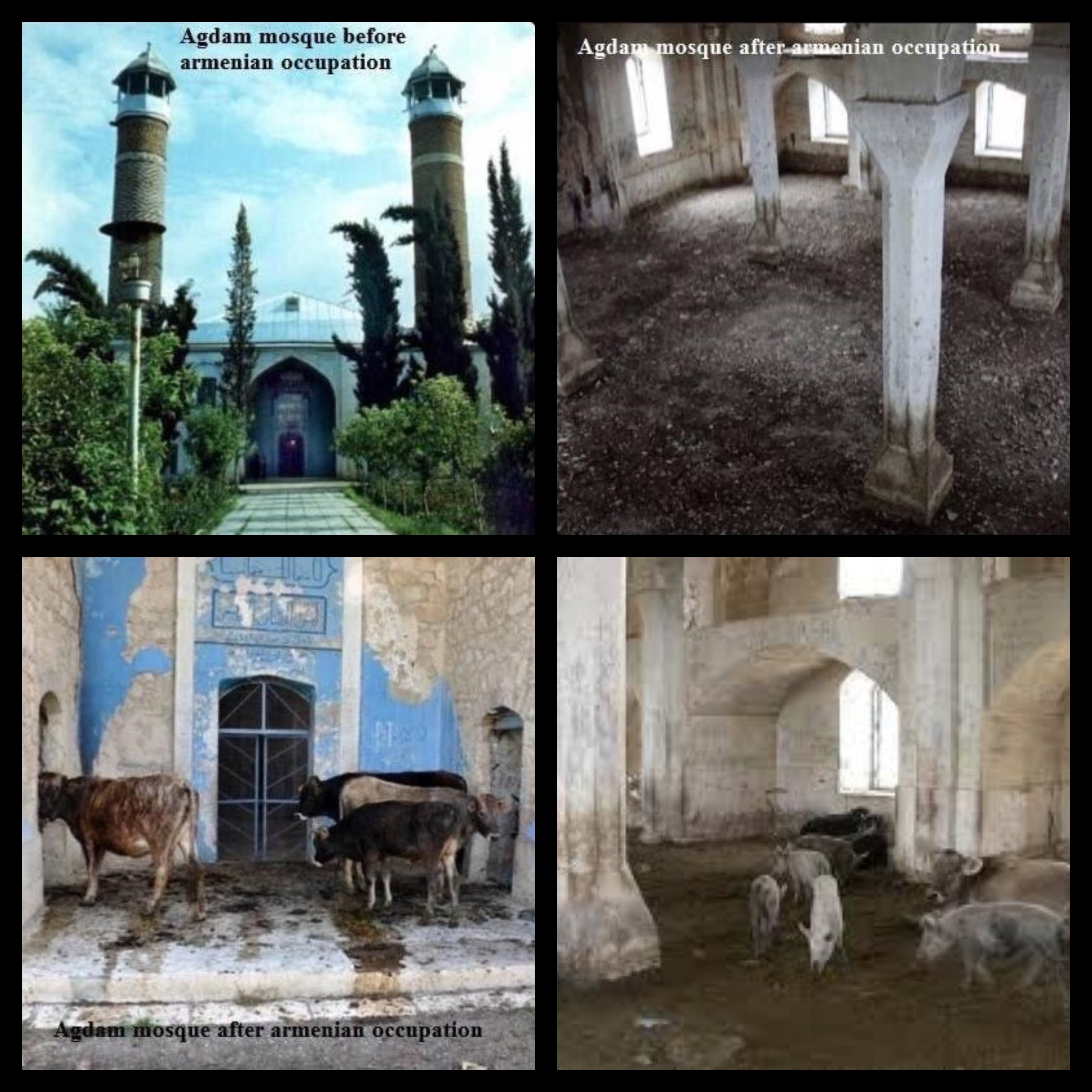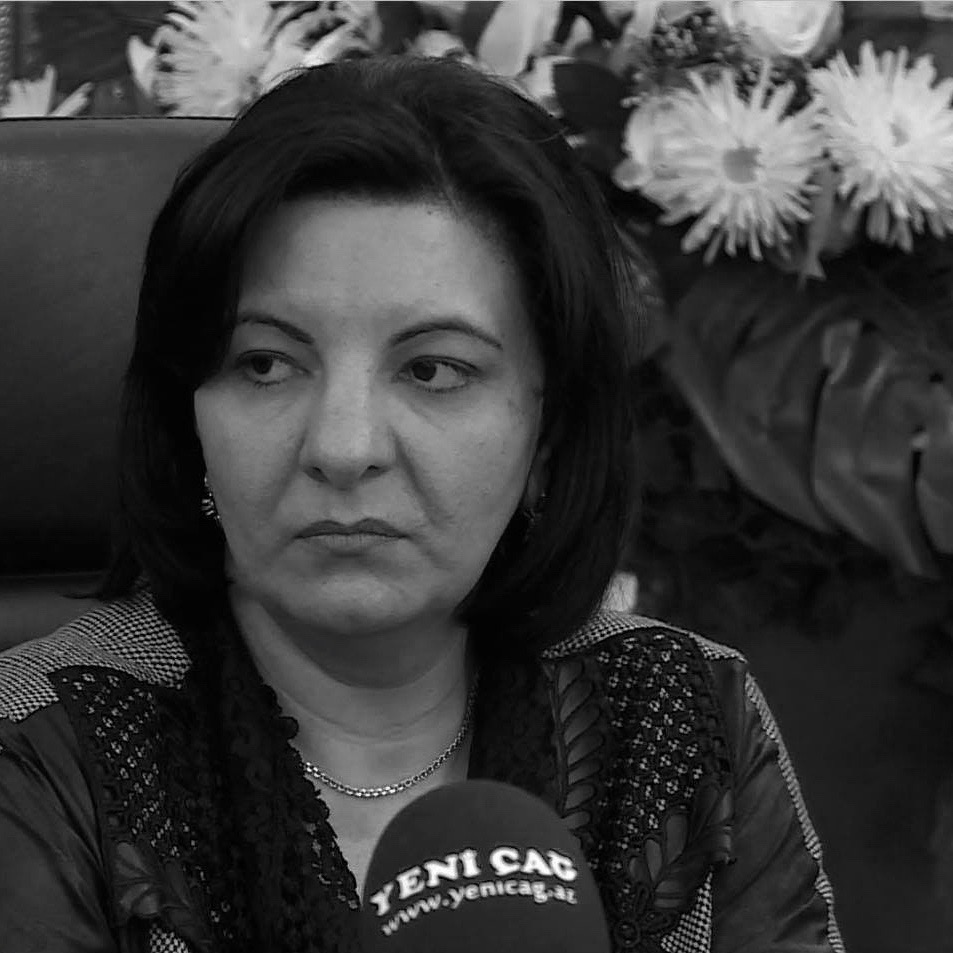
In an effort to justify ethnic cleansing, forces in the Caucasus are removing all evidence of a once thriving culture. Since the early 1990s Armenia has occupied the enclave of Nagorno-Karabakh and the surrounding seven districts of Azerbaijan, despite international recognition of Azerbaijan’s sovereignty over the area and despite four UN Security Council Resolutions condemning this unlawful military occupation. Over 800,000 Azerbaijani civilians, including me and all my family members, were expelled from our homes and lands that we inhabited for many generations and many centuries. While trying to flee the invasion and massacres, I was captured together with my brother, becoming helpless captives and undergoing horrendous cruelty and humiliation in Armenian torture camps.
Once the ethnic cleansing was completed, the occupying Armenian forces embarked on an effort to eliminate any traces of our existence there. This is a particularly odious move, since Nagorno-Karabakh is considered the cradle of Azerbaijani poetry, music and culture.
The destruction of Azerbaijani culture in the region was observed by the neutral Swiss journalist, Andre Widmer. After visiting the occupied city of Aghdam – once populated by 50,000 Azerbaijanis – in 2010, he wrote that the occupiers continued to loot the city and wipe it off the face of the earth. Pained by what he observed, Widmer wrote: “Yet even today, almost 20 years after the ceasefire was signed, the occupiers continue to loot Aghdam… A city of Aghdam has been reduced to the state of a spare parts depot for the victors of the war… Aghdam, robbed of the pulsating life of civilization, of cultural assets and of infrastructure, has become a lonely, eerie place in no-mans-land.” British journalist Thomas de Waal described the city as a “small Hiroshima.” The British travel writer George Mitchell also called Aghdam the “Hiroshima of the Caucasus.”
Of course, in any conflict there are competing claims of destruction. Armenian authorities have made a great deal of noise about the highly disputed ‘destruction’ of Armenian gravestones in Julfa. Armenians are silent, however, about the reported destruction of Azerbaijani cemeteries in Armenia and the occupied territories of Azerbaijan. There is equal silence on the Armenian plundering, desecration or destruction of 1891 pieces of Azerbaijani material and cultural resources, including 738 historical monuments, 28 museums with 83500 exhibits, 4 photo galleries, 14 memorial complexes and 1107 cultural institutions. According to Azerbaijan’s Ministry of Foreign Affairs, “A mosque complex dating back to the 17th century in Jabrayil, the Upper and Lower Govheraga and Saatli mosques of the 18th century in the city of Shusha and the Aghdam mosque of the XIX century were robbed and plundered, and turned into an object of insults. Archaeological monuments such as Vagif’s Mausoleum, Natavan’s House, Caravanserai were destroyed and plundered in Shusha.” The Juma Mosque in Aghdam was even used to house pigs and cows. Satellite imagery from the occupied territories confirm these claims.
Armenia has demanded that international observers be given access to Julfa, to investigate the alleged destruction of the cemetery. Azerbaijan has agreed to give access to the inspectors, provided the investigation be widened to include the destruction of Azerbaijani sites in Armenia and Armenian-occupied lands. The Armenian authorities have categorically rejected this condition.
Despite these disagreements, the Organization for Security and Cooperation in Europe (OSCE) sent fact-finding missions to the area in both 2005 and 2010. They confirmed the Armenian destruction of Azerbaijani cultural heritage in the region. Armenians even forced Azerbaijani prisoners of war to participate in the vandalism. After their release, a number of soldiers gave first hand accounts of how their captors forced them to desecrate monuments and graves in the town of Shusha.
There is one monument that the Armenians destroyed that is particularly telling. In 1978, the Armenian community erected a monument in the town of Maragha, “Woman at a Spring,” to commemorate the 150th anniversary of Armenians’ resettlement by the Russian Empire from the Middle East to Karabakh. Had this monument been allowed to stand, it would have been a silent witness to the most Armenians only living in the area since 1828, when Russia and Persia signed the notorious Turkmenchay Treaty dividing historic Azerbaijan between themselves. In accordance with this treaty, Russia resettled over 120,000 Armenians from the Ottoman Empire and Persia in Azerbaijani lands, especially in Karabakh, thereby significantly changing the ethnic demographic situation in the region. At the height of the 1992-1994 war in Karabakh, the Armenians destroyed their own monument, in an effort to erase this history.
Just as the destruction of almost 1900 cultural artifacts is designed to hide the long Azerbaijani hold on the land, the destruction of Maragha is designed to hide the short residency of Armenians in the area. The destruction of cultural monuments is another weapon in an ugly war of aggression. The United Nations Security Council and General Assembly have called for the return of the occupied lands to Azerbaijan, which would end this ugly aftermath of the collapse of the Soviet Empire.
The world should not be silent about the terrible cultural cleansing targeting the centuries-long heritage of my family and that of hundreds of thousands of other Azerbaijanis from Karabakh. Culture belongs to the world; its loss anywhere is a loss to us all.






















 More news and opinions than at a Shabbat dinner, right in your inbox.
More news and opinions than at a Shabbat dinner, right in your inbox.